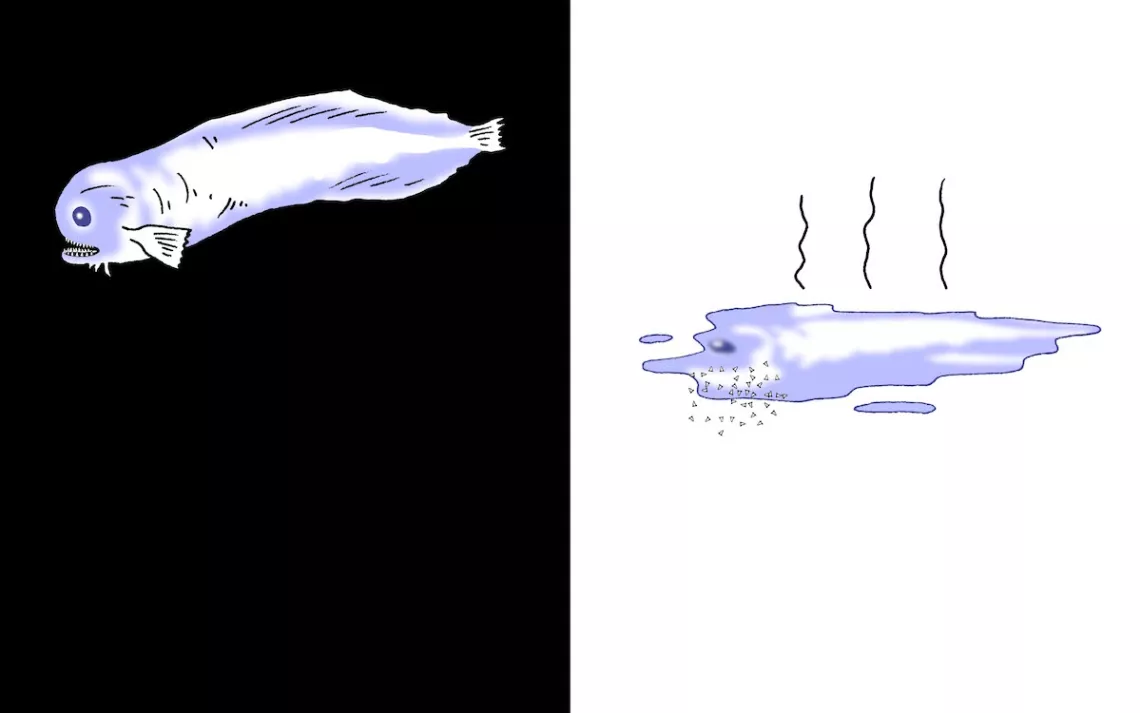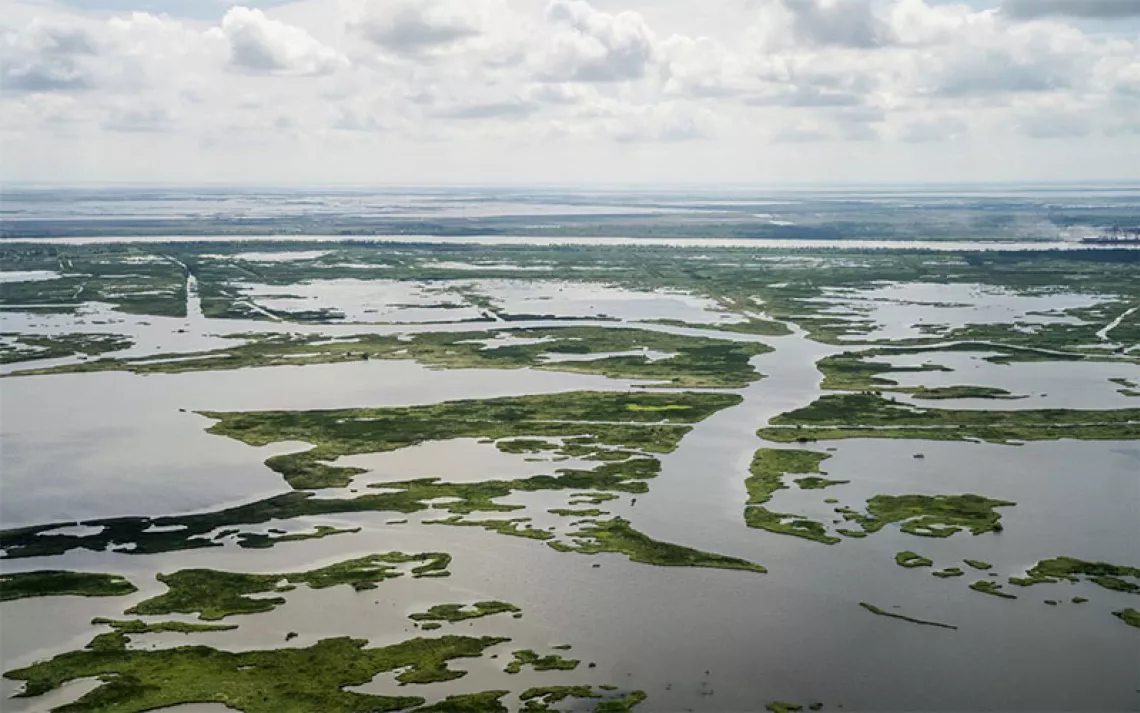ICYMI: Melting Fish, Lying Trump, Dying Mammoths, & More
A weekly roundup for busy people

Illustration by Peter Arkle
Three new species of snailfish are discovered at 26,000 feet in the Atacama Trench off the coast of Peru and Chile. The gelatinous fish lack scales and most bones; the hardest part of their bodies is their teeth. When brought to the surface, they melt.
Hurricane Florence strikes the Carolinas. It is expected to bring large storm surges and historic rainfall. A study concludes that Florence is 50 miles wider and will drop 50 percent more rainfall on the Atlantic Coast than otherwise because of human-caused climate change.
North Carolina, at risk for severe flooding from Hurricane Florence, passed a law in 2012 forbidding state policies to protect from sea level rise.
Trump lies about the number of people killed in Puerto Rico after Hurricane Maria, claiming that there were only “16 to 18 deaths.” Puerto Rico’s official death toll, based on an independent study by George Washington University published in August, is 2,975.
For the third time this year, Trump’s administration tries to make it easier for oil and gas drillers to release methane—a potent greenhouse gas—into the atmosphere.
California governor Jerry Brown signs SB 100, committing the state to 100 percent clean energy by 2045, and an executive order promising carbon neutrality by the same year.
Surpassing Russia and Saudi Arabia, the United States is now the world’s largest producer of crude oil.
A giant boom to catch floating garbage is deployed in the Pacific Ocean.
A bipartisan majority in California’s legislature votes to phase out gill nets, the large fishing nets that can entangle whales, dolphins, turtles, and other unintended species.
Some bleached portions of the Great Barrier Reef are recovering.
Collapsing glaciers are generating immense tsunamis in narrow fjords. A glacial wave that swept through Alaska’s Taan Fjord was as high as a 55-story building.
Climate change pushes alpine species upslope 100 meters for every 1°C rise in temperature.
Ungulates like bighorn sheep and moose are shown to learn their migratory paths socially. Adapting to a new route—to escape the effects of climate change, for example—can take as long as 50 or 60 years.
A species of cutthroat trout thought to be extinct is newly threatened by ash from wildfires in southwest Colorado and has to be rescued.
Maine combats the invasive winter moth—which feeds on maple trees and blueberries among other trees and shrubs—with a moth-loving species of parasitic fly.
An endangered California condor is shot and killed in Kern County, California.
After an eight-year study, BirdLife International declares the following bird species extinct: the cryptic treehunter, Alagoas foliage-gleaner, poo-uli, Spix's macaw (extinct in the wild), glaucous macaw, Pernambuco pygmy owl, New Caledonian lorikeet, and the Javan lapwing.
Large-scale solar and wind farms in Africa could increase rainfall and vegetation in the Sahara.
Eighty-seven elephants are killed for their tusks near Botswana’s Okavango Delta wildlife sanctuary.
Paleolithic people slaughtered mammoths in great numbers 28,000 years ago at a kill site discovered in Austria.
 The Magazine of The Sierra Club
The Magazine of The Sierra Club



